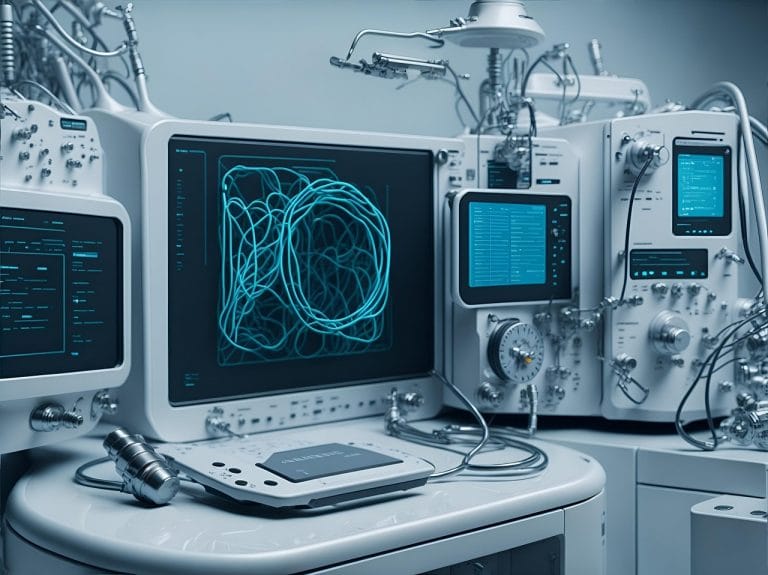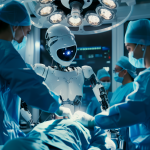Calming the AI Panic
There’s a growing anxiety around AI in medicine—fear that algorithms will strip away human touch, empathy and gut instinct. But here’s the truth: AI isn’t here to replace doctors, it’s here to elevate us—giving us the time, focus, and clarity to be more present and human.
More Time for What Matters
Take ambient AI scribes, for example. At Kaiser and The Permanente Medical Group, this technology has already saved clinicians over 15,000 hours in one year, dramatically cutting documentation time and allowing doctors to focus on patients (Business Insider, 2025) (AMA, 2025) (The Washington Post, 2025). Surveys show 84% of physicians report improved patient interactions, and 47% of patients feel their doctors maintain better eye contact during visits (Permanente Medicine, 2025).
Quality + Precision in Care
AI-driven diagnostics and decision support systems are now 72% accurate, helping identify high-risk conditions early and improving care coordination (AMA, 2024). But machines lack nuance—human empathy, intuition, and trust remain irreplaceable (Business Insider, 2025).
CRISPR + AI: Healing at the Genetic Level
We’re living in an era where CRISPR gene editing is curing diseases once deemed hopeless. In December 2023, the FDA approved Casgevy and Lyfgenia, the first CRISPR therapies for sickle cell disease—ushering in new hope for millions (FDA, 2023). Combined with AI-driven drug discovery, we’re speeding toward breakthroughs that can treat, prevent, or even eliminate chronic illnesses.
Balancing Tech and Touch
AI may drive the future of medicine, but it can’t replicate presence, compassion, or genuine connection. As studies show, AI works best when doctors guide it—using insights while applying human context (UC San Diego Health, 2025). It’s not an “either/or” scenario; it’s both—and—AI-enhanced care powered by human wisdom.
The Future I Believe In
I’m fired up for what’s next. When AI lifts the clerical load, doctors can listen deeper, ask more thoughtful questions, and truly see the person in front of them. Genetic breakthroughs and smarter diagnostics aren’t threats—they’re tools to make healthcare stronger, kinder, and more equitable.
Sources:
- The Washington Post. (2025). “This technology is becoming beloved by doctors and patients alike”. https://www.washingtonpost.com/opinions/2025/03/25/ambient-ai-health-care-artificial-intelligence/.
- UC San Diego Health. (2025). “Study Reveals AI Enhances Physician-Patient Communication.” https://health.ucsd.edu/news/press-releases/2024-04-15-study-reveals-ai-enhances-physician-patient-communication/.
- American Medical Association (AMA). (2025). “AI scribes save 15,000 hours—and restore the human side of medicine.” https://www.ama-assn.org/practice-management/digital-health/ai-scribes-save-15000-hours-and-restore-human-side-medicine.
- Permanente Medicine. (2025). “Analysis: AI scribes save physicians time, improve patient interactions and work satisfaction.” https://permanente.org/analysis-ai-scribes-save-physicians-time-improve-patient-interactions-and-work-satisfaction/.
- American Medical Association (AMA). (2024). “Big majority of doctors see upsides to using health care AI.” https://www.ama-assn.org/practice-management/digital-health/big-majority-doctors-see-upsides-using-health-care-ai.
- Business Insider. (2025). “He lost half his vision to glaucoma. Now he’s using AI to help spot disease — but he says tech will never replace doctors.” https://www.businessinsider.com/kevin-choi-mediwhale-ai-doctor-vision-2025-7.
- FDA. (2023). “FDA Approves First Gene Therapies to Treat Patients with Sickle Cell Disease.” https://www.fda.gov/news-events/press-announcements/fda-approves-first-gene-therapies-treat-patients-sickle-cell-disease.


